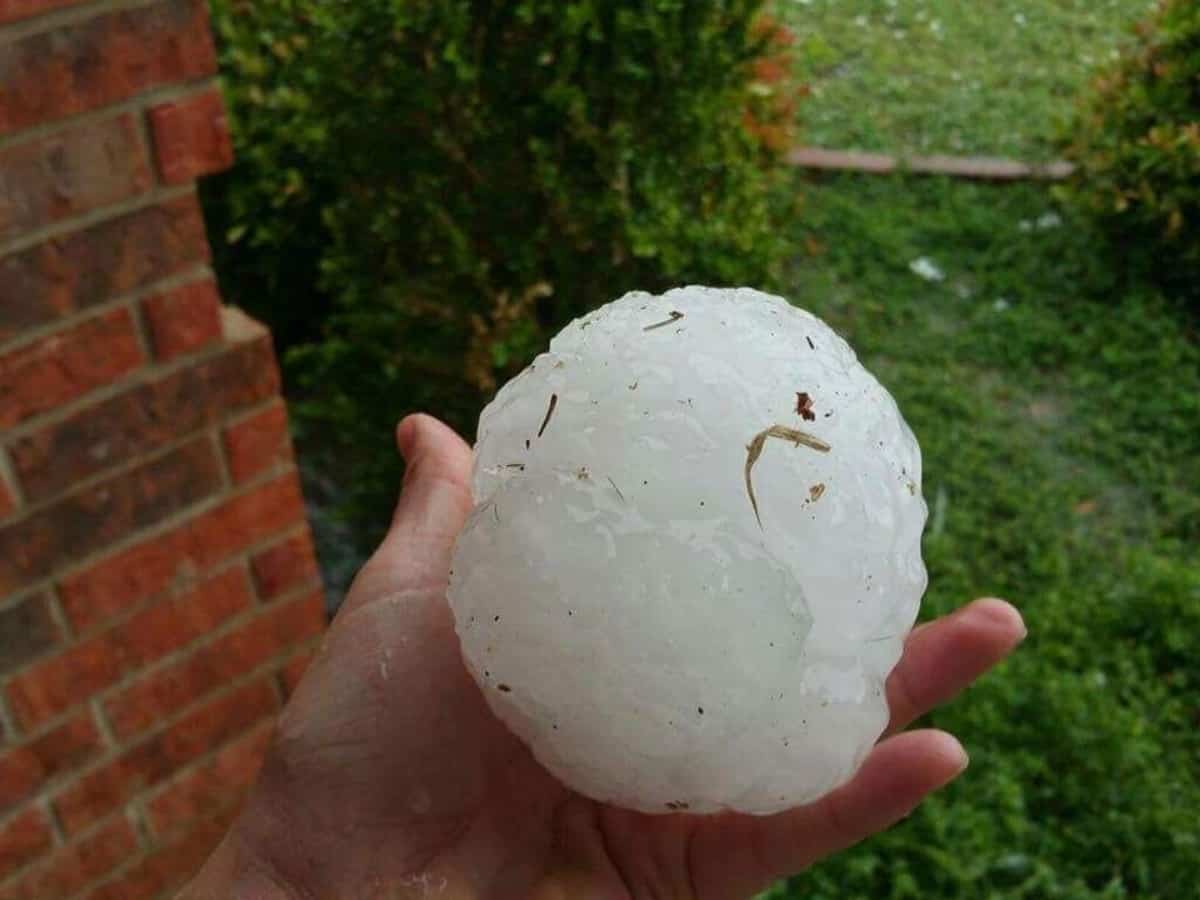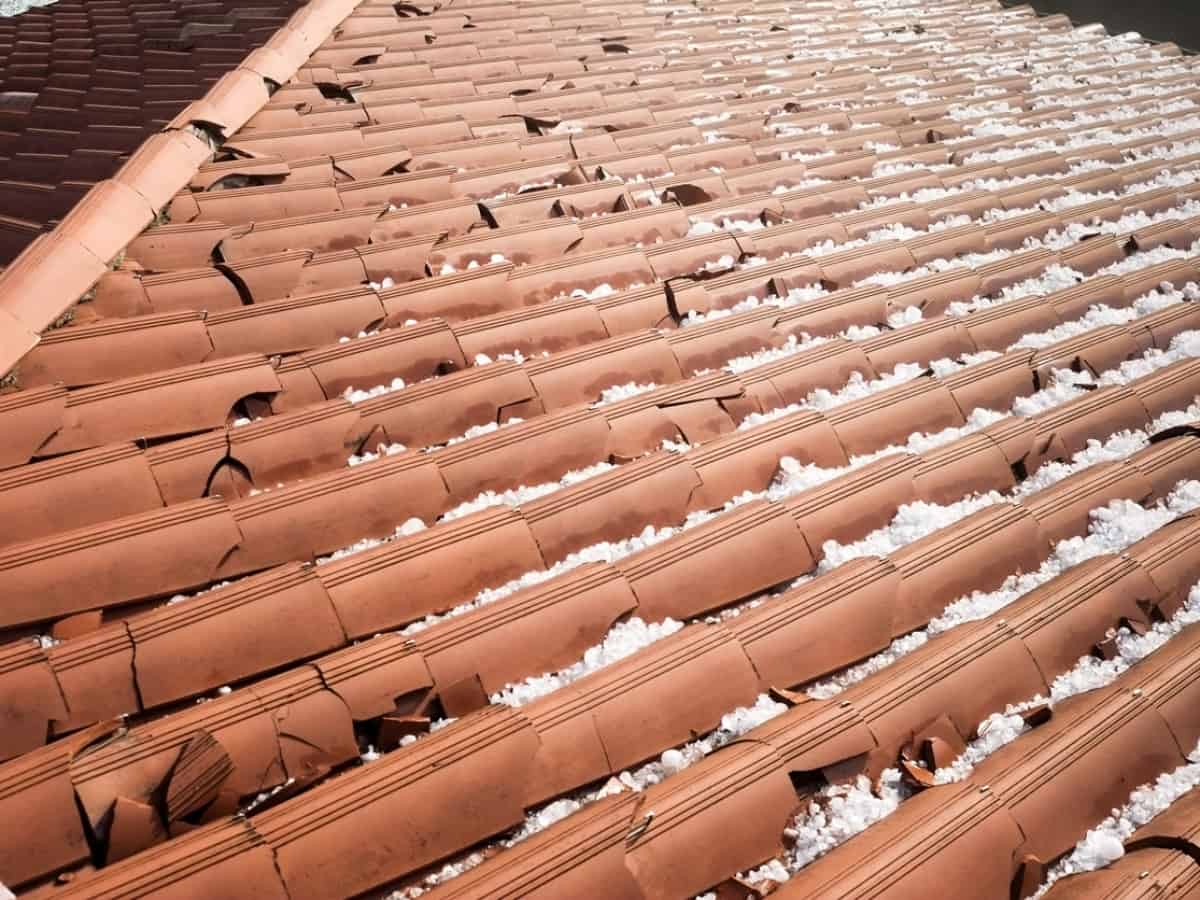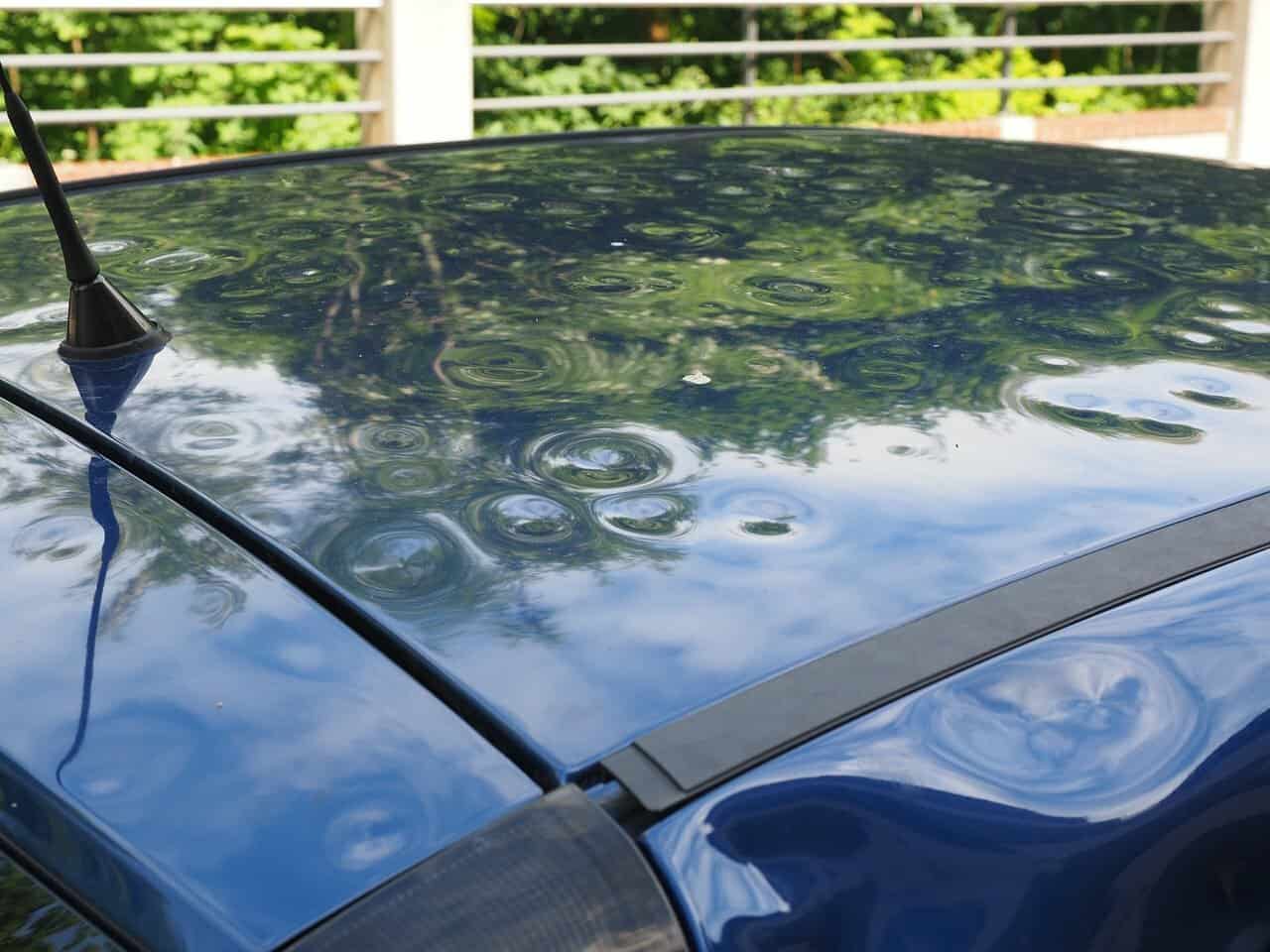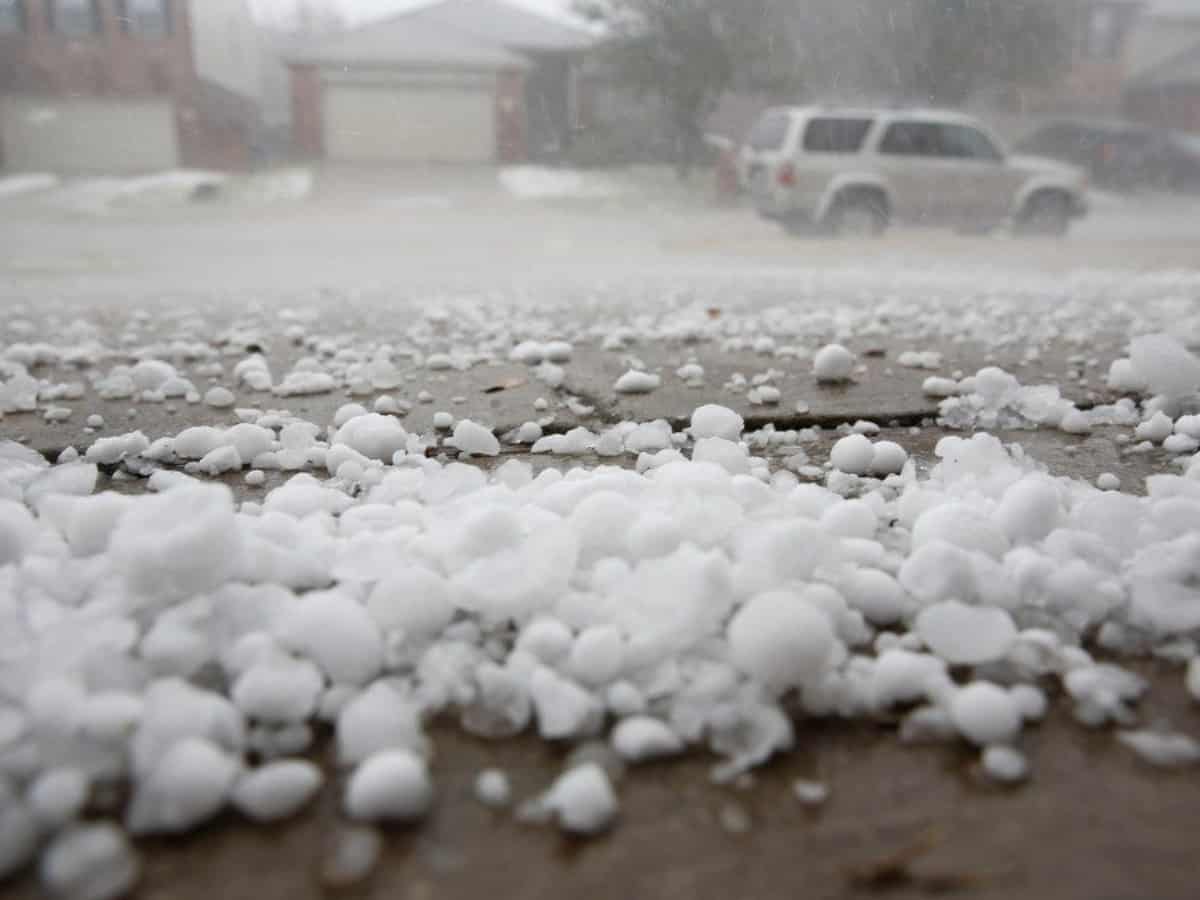Thunderstorms are all too common, specifically in the south. Powerful storms have the ability to produce violent and powerful storms, and some create hail But, what causes hail storms and thunderstorms? These storms don’t happen randomly, as there’s a series of things that must occur in order for hail to form. Find out how thunderstorms and hail form and what you should do if you’re caught in a storm.
What Causes Thunderstorms
To understand what causes hail storms, you must first understand how thunderstorms and they are formed. Thunderstorms form from warm and moist air rising into colder air. When the warm air becomes cooler, it creates excess moisture and water vapor. Then, the colder air drops and warm air rises, creating a convection cell. Convection cells cause clouds to form, leading to a thunderstorm.
Types of Thunderstorms
There are three different types of thunderstorms. These storms are classified by the structure and amount of convection cells present.
- Single Cell Thunderstorm: these storms are created through one convection cell. These are generally smaller thunderstorms, lasting up to an hour. They’re commonly seen during summer with tall cumulonimbus clouds. These storms produce rain and lightning, and occasionally hail storms.
- Multi-Cell Thunderstorms: this has multiple convection cells. The cells move together, creating a cluster with differing stages in the cycle. These storms last several hours since the cells are all in different stages. This creates strong wind gusts and can be 600 miles long. This type of thunderstorm also produces hail.
- Supercell Thunderstorms: these storms come with deep and rotating winds. The supercell is large, lasting for hours and resulting in a lot of rain and up to baseball sized hail. The convection moves quickly, potentially turning into one or more tornadoes. However, while destruction is very common with these storms, supercell thunderstorms aren’t very common.
What is Hail?
It’s a common misconception that hail is just frozen rain, but that’s not the case. Frozen rain is either referred to as freezing rain or sleet, depending on the season. However, hail is different from both of these weather occurrences. Hail is formed up in the clouds when drops of water freeze together. The ice chunks freeze together, creating hailstones. Just as they’re formed up in the top layer of the clouds together, they fall to the ground as a solid form as well.
Hail is usually large and spherical in shape, formed within an unstable air mass. Unstable air leads to large updraft speeds. The speed is fast enough to sustain the hailstone in the clouds to collect more layers, sometimes reaching over 60 mph.
What Causes Hail Storms?
Hailstones form through multiple layers of water attaching and freezing within the cloud. In this scenario, a water droplet falls from a cloud during the storm, but pushes back up into the cloud through an updraft or gust of wind. When it’s lifted, it collects other liquid droplets that freeze right to the stone, adding another layer onto it.
The hail stone eventually falls to the ground due to it being too heavy, or if the updraft wind stops or slows down enough to let gravity take over. Once it hits the ground, the hail can cause damage and destruction.
What Areas Receive the Most Hail?
There are certain parts of the world that have more hail than other parts of the world. These areas are often referred to as “hailstorm alleys.” In the United States, it spans from Wyoming through Texas, as the region and land features create optimal hail conditions in the atmosphere. This is a leader on what causes hail storms in the area. These areas receive more hail than the rest of the United States, giving it the moniker of hailstorm alley.
Though this area sees hail often, hail can occur with every thunderstorm. However, those areas have warm air, melting the ice between the time it leaves the cloud and hits the ground. Think of a state like Florida. Although they frequently have thunderstorms and hurricanes, the air is so warm there that the hail either melts before it hits the ground or it’s a tiny ice pellet. On the other side, hail alley has atmospheric conditions cold enough to keep the hailstone solid past the point of leaving the cloud.

How Big Can Hail Get?
According to the Storm Prediction Center, hail sizes range from 0.5 inches to 4.5 inches. Here is their size comparison chart to give you a better understanding of what the hail size looks like:
- 0.5 inches: Marble
- 0.75 inches: Penny
- 0.88 inches: Nickel
- 1 inch: Quarter
- 1.5 inches: Walnut or Ping Pong Ball
- 2 inches: Hen Egg
- 2.5 inches: Tennis Ball
- 2.75 inches: Baseball
- 3 inches: Tea Cup
- 4 inches: Softball
- 4.5 inches: Grapefruit
What Do You Do If You’re Stuck in a Hail Storm?
We’re not always home when storms hit, so understanding what you should do in a hail storm is important knowledge to have. The most important thing to do is to stay safe, so follow these tips to ensure that you’re in the best spot, given your location.
Driving In a Car
If you’re driving during a hail storm, stop driving as soon as possible! Look around you to see if you can find a safe spot nearby that is covered. In the event you find one, head there as fast as you can to wait out the storm. If not, make sure to pull completely off the road or highway, but not stop under a bridge or an overpass.
Then, you’re just going to wait it out. You shouldn’t leave your vehicle until the hail stops for safety reasons. Additionally, keep away from car windows and cover your eyes and face with something protective, such as fabric from clothes. If you have children, put them under your body and protect and cover their eyes.
In a Building With Large Windows
Keep away from windows and do not go outside, as hail can cause serious, sometimes fatal, injuries.
Outdoors
If you’re outside, seek shelter immediately. If there’s nothing readily available, use your arms and hands to protect your head against falling hail. Keep away from lowland areas that have a proclivity to flooding and use trees as your very last resort. Remember, storms often cause tree damage, so you’ll want to keep away from falling branches or lightning strikes.

Home Insurance and Hail Damage
Almost 70% of home insurance claims come directly from hail related damages! Most home insurance policies cover hail damage as part of your structural damage policy. Structural damage accounts for roof, windows, attached garage, appliances, deck, or porch. If you have a detached garage or tool shed, you can take out an additional policy to protect it.
Hail damage is covered through your hazard insurance if it is a named peril. Not all policies have hail as a named peril on your insurance, so make sure to pull up your policy and check for hail, as policy changes made after damage are not covered. If you do have hail as a named peril, your insurance helps you pay for the repairs and rebuilding of physical damage to your home or anything attached to your property.
Car Insurance and Hail Damage
Hail damage is covered by car insurance if you have comprehensive coverage prior to the damage. This pays for the repair or replacement of the covered vehicle due damages such as:
- Hail
- Fire
- Flood
- Theft
- Vandalism
- Wind
- Falling objects
- Hitting an animal
After a hail storm, check your vehicle for any damage. If there is sustained damage, contact your insurance as soon as possible to report the claim. Your provider is there to talk you through the next steps before providing you with estimation on repairs. However, there are some scenarios to consider beforehand. For one, there are cases when the cost to repair your vehicle is less than a deductible. In this case, don’t make the deductible and just fix the car on your own. On the other hand, there could be enough damage where the repair costs more than the car’s total value, resulting in a totaled car.

Tips for Keeping Your Vehicle Safe in a Hail Storm
- Keep Your Car in the Garage. If your home or rental property has a garage, keep your vehicle parked in that space until the storm passes. This way, you’re protecting your car from dents or broken windows caused by hail storms.
- Use Covered Parking! There are apartment complexes that provide residents with covered parking at an additional expense. If you live in a city that’s likely to ensure a hail storm, investing in covered parking might be a great decision.
- Find a Parking Garage. This suggestion is most accessible for those already on the road during a hail storm. However, if you know there’s a parking garage nearby that you can use to seek temporary shelter and protect your car, drive there!
- Use large blankets or a hail guard on your vehicle to protect it
- You can also use bubble wrap or pool noodles!



